The Summer Solstice Has Arrived!
The Summer Solstice Has Arrived!
This year’s summer solstice for the northern hemisphere arrives at 11:54 a.m. EDT, meaning today is the longest day of the year! The number of daylight hours varies by latitude, so our headquarters in Washington, D.C. will see 14 hours, 53 minutes, and 51 seconds of daylight. A lot can happen in that time! Let’s find out more.

If you’re spending the day outside, you might be in the path of our Earth Science Satellite Fleet (ESSF)! The fleet, made up of over a dozen Earth observation satellites, will pass over the continental United States about 37 times during today’s daylight hours.

These missions collect data on atmospheric chemistry and composition, cloud cover, ocean levels, climate, ecosystem dynamics, precipitation, and glacial movement, among other things. They aim to do everything from predicting extreme weather to helping informing the public and decision makers with the environment through GPS and imaging. Today, their sensors will send back over 200 gigabytes (GB) of data back to the ground by sunset.

As the sun sets today, the International Space Station (ISS) will be completing its 10th orbit since sunrise. In that time, a little more than 1 terabyte-worth of data will be downlinked to Earth.

That number encompasses data from ground communications, payloads, experiments, and control and navigation signals for the station. Approximately 330 GB of that TB is video, including live broadcasts and downlinks with news outlets. But as recently-returned astronaut Serena Auñón-Chancellor likes to point out, there’s still room for fun. The astronauts aboard the ISS can request YouTube videos or movies for what she likes to call “family movie night.”

Astronauts aboard the station also send back images—LOTS of them. Last year, astronauts sent back an average of 66,912 images per month! During today’s long hours of daylight, we expect the crew to send back about 656 images. But with Expedition 59 astronauts David Saint-Jacques (CSA), Anne McClain (NASA), and Oleg Kononenko (RKA) hard at work preparing to return to Earth on Monday, that number might be a little less.

Say you’re feeling left out after seeing the family dinners and want to join the crew. Would you have enough daylight to travel to the ISS and back on the longest day of the year? Yes, but only if you’re speedy enough, and plan your launch just right. With the current fastest launch-to-docking time of about six hours, you could complete two-and-a-half flights to the ISS today between sunrise and sunset.

When returning from orbit, it’s a longer ordeal. After the Expedition 59 trio arrives on Earth Monday night, they’ll have to travel from Kazakhstan to Houston to begin their post-flight activities. Their journey should take about 18 hours and 30 minutes, just a few hours longer than the hours of daylight we’ll see today.

Happy solstice! Make sure to tune in with us on Monday night for live coverage of the return of Expedition 59. Until then, enjoy the longest day of the year!
Make sure to follow us on Tumblr for your regular dose of space: http://nasa.tumblr.com.
More Posts from Ocrim1967 and Others
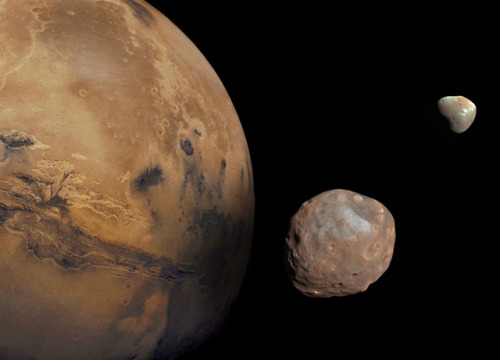
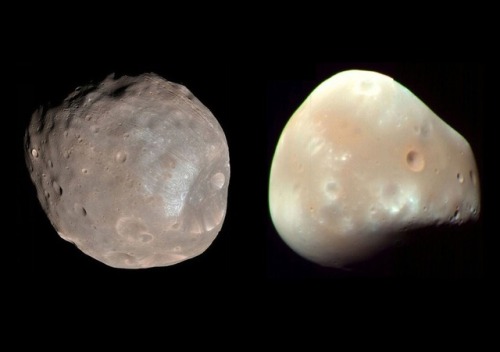

In 40 million years, Mars may have a ring (and one fewer moon)
Nothing lasts forever - especially Phobos, one of the two small moons orbiting Mars. The moonlet is spiraling closer and closer to the Red Planet on its way toward an inevitable collision with its host. But a new study suggests that pieces of Phobos will get a second life as a ring around the rocky planet.
A moon - or moonlet - in orbit around a planet has three possible destinies. If it is just the right distance from its host, it will stay in orbit indefinitely. If it’s beyond that point of equilibrium, it will slowly drift away. (This is the situation with the moon; as it gradually pulls away from Earth, its orbit is growing by about 1.5 inches per year.) And if a moon starts out on the too-close side, its orbit will keep shrinking until there is no distance left between it and its host planet. The Martian ring will last for at least 1 million years - and perhaps for as long as 100 million years, according to the study.
The rest of Phobos will probably remain intact, until it hits the Martian surface. But it won’t be a direct impact; instead, the moonlet’s remains will strike at an oblique angle, skipping along the surface like a smooth stone on a calm lake.
This has probably happened before - scientists believe a group of elliptical craters on the Martian surface were caused by a small moon that skidded to its demise. (If this were to happen on Earth, our planet’s greater mass would produce a crash as big as the one that wiped out the dinosaurs, the researchers noted as an aside.)
source
images: NASA/JPL, Tushar Mittal using Celestia 2001-2010, Celestia Development Team.
















Ask Ethan: Is There A Fundamental Reason Why E = mc²?
“Einstein’s equation is amazingly elegant. But is its simplicity real or only apparent? Does E = mc² derive directly from an inherent equivalence between any mass’s energy and the square of the speed of light (which seems like a marvelous coincidence)? Or does the equation only exist because its terms are defined in a (conveniently) particular way?”
Quite arguably, Einstein’s E = mc² is the most famous equation in the entire world. And yet, it isn’t obvious why it had to be this way! Could there have been some other speed besides the speed of light that converts mass to energy? Could there have been a multiplicative constant out in front besides “1” to give the right answer? No, no there couldn’t. If energy and momentum are conserved, and particles have the energies and momenta that they do, there’s no other option.
Come learn, at last, why E = mc², and why simply no other alternative will do.
10 Steps to Confirm a Planet Around Another Star
So you think you found an exoplanet – a planet around another star? It’s not as simple as pointing a telescope to the sky and looking for a planet that waves back. Scientists gather many observations and carefully analyze their data before they can be even somewhat sure that they’ve discovered new worlds.
Here are 10 things to know about finding and confirming exoplanets.

This is an illustration of the different elements in our exoplanet program, including ground-based observatories, like the W. M. Keck Observatory, and space-based observatories like Hubble, Spitzer, Kepler, TESS, James Webb Space Telescope, WFIRST and future missions.
1. Pick your tool to take a look.
The vast majority of planets around other stars have been found through the transit method so far. This technique involves monitoring the amount of light that a star gives off over time, and looking for dips in brightness that may indicate an orbiting planet passing in front of the star.
We have two specialized exoplanet-hunting telescopes scanning the sky for new planets right now – Kepler and the Transiting Exoplanet Survey Satellite (TESS) – and they both work this way. Other methods of finding exoplanets include radial velocity (looking for a “wobble” in a star’s position caused by a planet’s gravity), direct imaging (blocking the light of the star to see the planet) and microlensing (watching for events where a star passes in front of another star, and the gravity of the first star acts as a lens).
Here’s more about finding exoplanets.

2. Get the data.
To find a planet, scientists need to get data from telescopes, whether those telescopes are in space or on the ground. But telescopes don’t capture photos of planets with nametags. Instead, telescopes designed for the transit method show us how brightly thousands of stars are shining over time. TESS, which launched in April and just began collecting science data, beams its stellar observations back to Earth through our Deep Space Network, and then scientists get to work.

3. Scan the data for planets.
Researchers combing through TESS data are looking for those transit events that could indicate planets around other stars. If the star’s light lessens by the same amount on a regular basis – for example, every 10 days – this may indicate a planet with an orbital period (or “year”) of 10 days. The standard requirement for planet candidates from TESS is at least two transits – that is, two equal dips in brightness from the same star.

4. Make sure the planet signature couldn’t be something else.
Not all dips in a star’s brightness are caused by transiting planets. There may be another object – such as a companion star, a group of asteroids, a cloud of dust or a failed star called a brown dwarf, that makes a regular trip around the target star. There could also be something funky going on with the telescope’s behavior, how it delivered the data, or other “artifacts” in data that just aren’t planets. Scientists must rule out all non-planet options to the best of their ability before moving forward.

5. Follow up with a second detection method.
Finding the same planet candidate using two different techniques is a strong sign that the planet exists, and is the standard for “confirming” a planet. That’s why a vast network of ground-based telescopes will be looking for the same planet candidates that TESS discovers. It is also possible that TESS will spot a planet candidate already detected by another telescope in the past. With these combined observations, the planet could then be confirmed. The first planet TESS discovered, Pi Mensae c, orbits a star previously observed with the radial-velocity method on the ground. Scientists compared the TESS data and the radial-velocity data from that star to confirm the presence of planet “c.”
Scientists using the radial-velocity detection method see a star’s wobble caused by a planet’s gravity, and can rule out other kinds of objects such as companion stars. Radial-velocity detection also allows scientists to calculate the mass of the planet.

6. …or at least another telescope.
Other space telescopes may also be used to help confirm exoplanets, characterize them and even discover additional planets around the same stars. If the planet is detected by the same method, but by two different telescopes, and has received enough scrutiny that the scientists are more than 99 percent sure it’s a planet, it is said to be “validated” instead of “confirmed.”

7. Write a paper.
After thoroughly analyzing the data, and running tests to make sure that their result still looks like the signature of a planet, scientists write a formal paper describing their findings. Using the transit method, they can also report the size of the planet. The planet’s radius is related to how much light it blocks from the star, as well as the size of the star itself. The scientists then submit the study to a journal.

8. Wait for peer review.
Scientific journals have a rigorous peer review process. This means scientific experts not involved in the study review it and make sure the findings look sound. The peer-reviewers may have questions or suggestions for the scientists. When everyone agrees on a version of the study, it gets published.
9. Publish the study.
When the study is published, scientists can officially say they have found a new planet. This may still not be the end of the story, however. For example, the TRAPPIST telescope in Chile first thought they had discovered three Earth-size planets in the TRAPPIST-1 system. When our Spitzer Space Telescope and other ground-based telescopes followed up, they found that one of the original reported planets (the original TRAPPIST-1d) did not exist, but they discovered five others –bringing the total up to seven wondrous rocky worlds.

10. Catalog and celebrate – and look closer if you can!
Confirmed planets get added to our official catalog. So far, Kepler has sent back the biggest bounty of confirmed exoplanets of any telescope – more than 2,600 to date. TESS, which just began its planet search, is expected to discover many thousands more. Ground-based follow-up will help determine if these planets are gaseous or rocky, and possibly more about their atmospheres. The forthcoming James Webb Space Telescope will be able to take a deeper look at the atmospheres of the most interesting TESS discoveries.
Scientists sometimes even uncover planets with the help of people like you: exoplanet K2-138 was discovered through citizen scientists in Kepler’s K2 mission data. Based on surveys so far, scientists calculate that almost every star in the Milky Way should have at least one planet. That makes billions more, waiting to be found! Stay up to date with our latest discoveries using this exoplanet counter.
Make sure to follow us on Tumblr for your regular dose of space: http://nasa.tumblr.com.










What Makes Something A Planet, According To An Astrophysicist?
“A dolphin may look like a fish, but it’s really a mammal. Similarly, the composition of an object is not the only factor in classifying it: its evolutionary history is inextricably related to its properties. Scientists will likely continue to argue over how to best classify all of these worlds, but it’s not just astronomers and planetary scientists who have a stake in this. In the quest to make organizational sense of the Universe, we have to confront it with the full suite of our knowledge.
Although many will disagree, moons, asteroids, Kuiper belt and Oort cloud objects are fascinating objects just as worthy of study as modern-day planets are. They may even be better candidates for life than many of the true planets are. But each object’s properties are inextricably related to the entirety of its formation history. When we try to classify the full suite of what we’re finding, we must not be misled by appearances alone.”
You’ve heard about the IAU’s definition, where in order to be a planet, you must pull yourself into hydrostatic equilibrium, orbit the Sun and nothing else, and gravitationally clear your orbit. You’ve also heard about the controversial new definition from geophysical/planetary science arguments, that planets should be based on their ability to pull themselves into a spheroidal shape alone.
Well, what about a third way: defining planets (and a whole classification scheme) based on astrophysical concerns alone? It’s time to start thinking about it!










This Is How Mastering Dark Matter Could Take Us To The Stars
“Because dark matter is everywhere, we wouldn’t even need to carry it with us as we traversed the Universe. As far as we understand it — and admittedly, we need to understand it a lot farther — dark matter could truly deliver our dream of the ultimate fuel. It’s abundant all throughout our galaxy and beyond; it should have a non-zero annihilation cross-section with itself; and when it does annihilate, it should produce energy with 100% efficiency.
Perhaps, then, most of us have been thinking about experiments seeking to directly detect dark matter all wrong. Yes, we want to know what makes up the Universe, and what the physical properties of its various abundant components truly are. But there’s a science-fiction dream that could come true if nature is kind to us: unlimited, free energy just waiting there for us to harness, no matter where in the galaxy we go.
Mastering dark matter is the endeavor that just might make it so.”
When we talk about our dreams of traveling to the stars, it normally involves a mythical, futuristic form of travel that goes beyond the known laws of physics. Why’s that? Because even if you increase the efficiency of your rocket fuel far beyond the limitations of any chemical-based reaction we know of, you’d still be limited in how far you could go by the mass of your spacecraft and the fuel you were able to take with you on board. You’d still have to accelerate (and decelerate) all the fuel you brought with you, until you ran out. If only there were a 100%-efficient fuel source that was ubiquitous all throughout the galaxy and beyond.
There is: dark matter. Here’s why it’s so important to study, understand, and eventually, fulfill the dream of harnessing it!

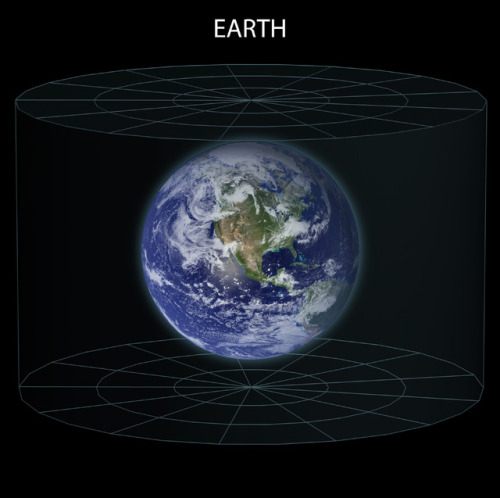
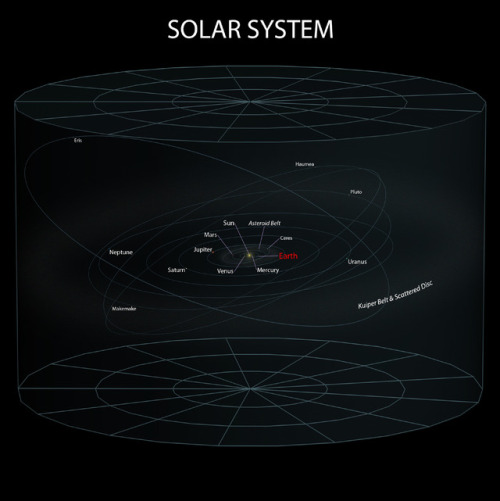
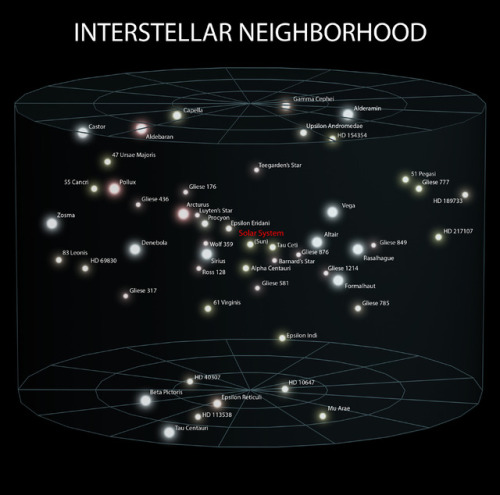

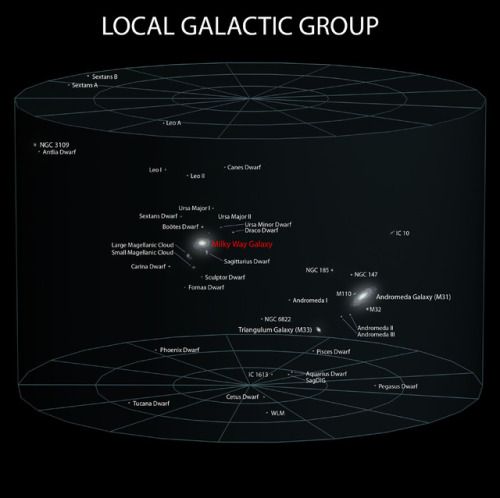
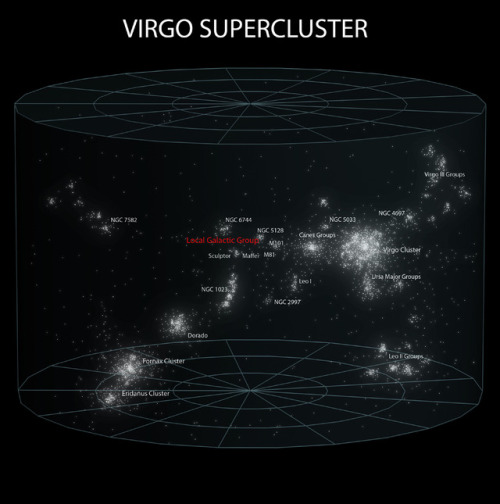
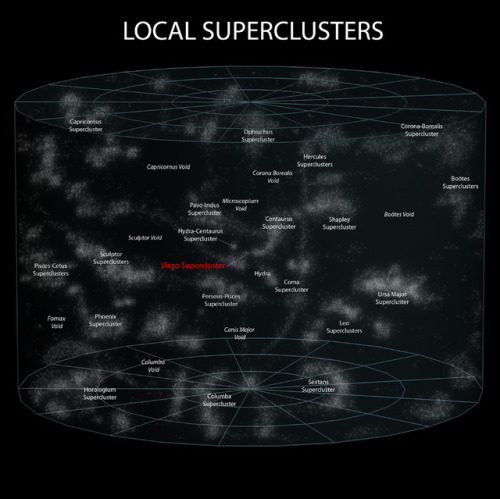
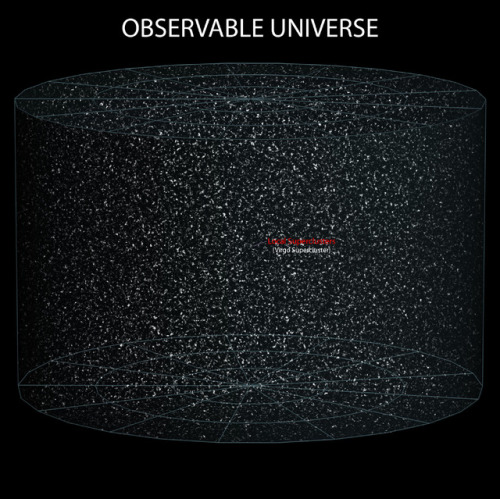
~ wikimedia commons










We Like Big Rockets and We Cannot Lie: Saturn V vs. SLS
On this day 50 years ago, human beings embarked on a journey to set foot on another world for the very first time.

At 9:32 a.m. EDT, millions watched as Apollo astronauts Neil Armstrong, Buzz Aldrin and Michael Collins lifted off from Launch Pad 39A at the Kennedy Space Center in Cape Canaveral, Florida, flying high on the most powerful rocket ever built: the mighty Saturn V.

As we prepare to return humans to the lunar surface with our Artemis program, we’re planning to make history again with a similarly unprecedented rocket, the Space Launch System (SLS). The SLS will be our first exploration-class vehicle since the Saturn V took American astronauts to the Moon a decade ago. With its superior lift capability, the SLS will expand our reach into the solar system, allowing astronauts aboard our Orion spacecraft to explore multiple, deep-space destinations including near-Earth asteroids, the Moon and ultimately Mars.

So, how does the Saturn V measure up half a century later? Let’s take a look.
Mission Profiles: From Apollo to Artemis
Saturn V

Every human who has ever stepped foot on the Moon made it there on a Saturn V rocket. The Saturn rockets were the driving force behind our Apollo program that was designed to land humans on the Moon and return them safely back to Earth.

Developed at our Marshall Space Flight Center in the 1960s, the Saturn V rocket (V for the Roman numeral “5”) launched for the first time uncrewed during the Apollo 4 mission on November 9, 1967. One year later, it lifted off for its first crewed mission during Apollo 8. On this mission, astronauts orbited the Moon but did not land. Then, on July 16, 1969, the Apollo 11 mission was the first Saturn V flight to land astronauts on the Moon. In total, this powerful rocket completed 13 successful missions, landing humans on the lunar surface six times before lifting off for the last time in 1973.
Space Launch System (SLS)

Just as the Saturn V was the rocket of the Apollo generation, the Space Launch System will be the driving force behind a new era of spaceflight: the Artemis generation.

During our Artemis missions, SLS will take humanity farther than ever before. It is the vehicle that will return our astronauts to the Moon by 2024, transporting the first woman and the next man to a destination never before explored – the lunar South Pole. Over time, the rocket will evolve into increasingly more powerful configurations to provide the foundation for human exploration beyond Earth’s orbit to deep space destinations, including Mars.
SLS will take flight for the first time during Artemis 1 where it will travel 280,000 miles from Earth – farther into deep space than any spacecraft built for humans has ever ventured.
Size: From Big to BIGGER
Saturn V

The Saturn V was big.
In fact, the Vehicle Assembly Building at Kennedy Space Center is one of the largest buildings in the world by volume and was built specifically for assembling the massive rocket. At a height of 363 feet, the Saturn V rocket was about the size of a 36-story building and 60 feet taller than the Statue of Liberty!
Space Launch System (SLS)

Measured at just 41 feet shy of the Saturn V, the initial SLS rocket will stand at a height of 322 feet. Because this rocket will evolve into heavier lift capacities to facilitate crew and cargo missions beyond Earth’s orbit, its size will evolve as well. When the SLS reaches its maximum lift capability, it will stand at a height of 384 feet, making it the tallest rocket in the world.
Power: Turning Up the Heat
Saturn V
For the 1960s, the Saturn V rocket was a beast – to say the least.
Fully fueled for liftoff, the Saturn V weighed 6.2 million pounds and generated 7.6 million pounds of thrust at launch. That is more power than 85 Hoover Dams! This thrust came from five F-1 engines that made up the rocket’s first stage. With this lift capability, the Saturn V had the ability to send 130 tons (about 10 school buses) into low-Earth orbit and about 50 tons (about 4 school buses) to the Moon.
Space Launch System (SLS)

Photo of SLS rocket booster test
Unlike the Saturn V, our SLS rocket will evolve over time into increasingly more powerful versions of itself to accommodate missions to the Moon and then beyond to Mars.
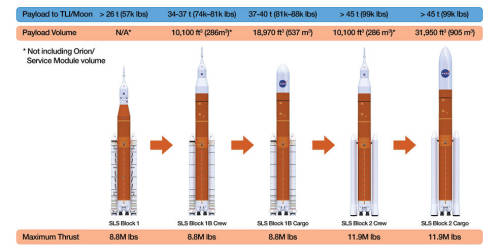
The first SLS vehicle, called Block 1, will weigh 5.75 million pounds and produce 8.8 million pounds of thrust at time of launch. That’s 15 percent more than the Saturn V produced during liftoff! It will also send more than 26 tons beyond the Moon. Powered by a pair of five-segment boosters and four RS-25 engines, the rocket will reach the period of greatest atmospheric force within 90 seconds!

Following Block 1, the SLS will evolve five more times to reach its final stage, Block 2 Cargo. At this stage, the rocket will provide 11.9 million pounds of thrust and will be the workhorse vehicle for sending cargo to the Moon, Mars and other deep space destinations. SLS Block 2 will be designed to lift more than 45 tons to deep space. With its unprecedented power and capabilities, SLS is the only rocket that can send our Orion spacecraft, astronauts and large cargo to the Moon on a single mission.
Build: How the Rockets Stack Up
Saturn V

The Saturn V was designed as a multi-stage system rocket, with three core stages. When one system ran out of fuel, it separated from the spacecraft and the next stage took over. The first stage, which was the most powerful, lifted the rocket off of Earth’s surface to an altitude of 68 kilometers (42 miles). This took only 2 minutes and 47 seconds! The first stage separated, allowing the second stage to fire and carry the rest of the stack almost into orbit. The third stage placed the Apollo spacecraft and service module into Earth orbit and pushed it toward the Moon. After the first two stages separated, they fell into the ocean for recovery. The third stage either stayed in space or crashed into the Moon.
Space Launch System (SLS)
Much like the Saturn V, our Space Launch System is also a multi-stage rocket. Its three stages (the solid rocket boosters, core stage and upper stage) will each take turns thrusting the spacecraft on its trajectory and separating after each individual stage has exhausted its fuel. In later, more powerful versions of the SLS, the third stage will carry both the Orion crew module and a deep space habitat module.
A New Era of Space Exploration
Just as the Saturn V and Apollo era signified a new age of exploration and technological advancements, the Space Launch System and Artemis missions will bring the United States into a new age of space travel and scientific discovery.
Join us in celebrating the 50th anniversary of the Apollo 11 Moon landing and hear about our future plans to go forward to the Moon and on to Mars by tuning in to a special two-hour live NASA Television broadcast at 1 p.m. ET on Friday, July 19. Watch the program at www.nasa.gov/live.
Make sure to follow us on Tumblr for your regular dose of space: http://nasa.tumblr.com.


Chandra Spots Extremely Long Cosmic Jet in Early Universe
http://www.sci-news.com/astronomy/chandra-extremely-long-cosmic-jet-early-universe-09436.html
-
 occultvault reblogged this · 1 month ago
occultvault reblogged this · 1 month ago -
 godirtyme reblogged this · 4 months ago
godirtyme reblogged this · 4 months ago -
 godirtyme liked this · 4 months ago
godirtyme liked this · 4 months ago -
 cpw-nyc liked this · 6 months ago
cpw-nyc liked this · 6 months ago -
 naturecpw reblogged this · 6 months ago
naturecpw reblogged this · 6 months ago -
 choiswunghyuntttop liked this · 11 months ago
choiswunghyuntttop liked this · 11 months ago -
 talesofruby01 liked this · 1 year ago
talesofruby01 liked this · 1 year ago -
 smol-flower-kiddo liked this · 3 years ago
smol-flower-kiddo liked this · 3 years ago -
 annabellesacres reblogged this · 3 years ago
annabellesacres reblogged this · 3 years ago -
 pavin-thomas reblogged this · 4 years ago
pavin-thomas reblogged this · 4 years ago -
 moonfaery reblogged this · 4 years ago
moonfaery reblogged this · 4 years ago -
 tinyshe liked this · 4 years ago
tinyshe liked this · 4 years ago -
 cliffsteele reblogged this · 4 years ago
cliffsteele reblogged this · 4 years ago -
 cliffsteele liked this · 4 years ago
cliffsteele liked this · 4 years ago -
 mafaldinablabla liked this · 4 years ago
mafaldinablabla liked this · 4 years ago -
 deadyduke reblogged this · 4 years ago
deadyduke reblogged this · 4 years ago -
 fights-against-injustice liked this · 4 years ago
fights-against-injustice liked this · 4 years ago -
 infovisualinvesting liked this · 5 years ago
infovisualinvesting liked this · 5 years ago -
 senoritafish liked this · 5 years ago
senoritafish liked this · 5 years ago -
 enhancedmode liked this · 5 years ago
enhancedmode liked this · 5 years ago -
 yes-wonderlandsongs liked this · 5 years ago
yes-wonderlandsongs liked this · 5 years ago